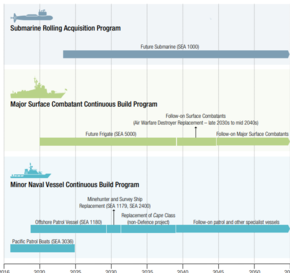Until the SEA 5000 decision has been announced, and the different tender offers revealed we most likely will not know.
I would imagine that there would be more acoustic quieting done for the Italian FREMM ASW variants than was done for the Spanish F100 and F105 frigates or the related
Hobart-class DDG. I am uncertain whether or not the same would also apply to the
Fridtjof Nansen-class frigates which are another related class to the F100, though with a greater initial ASW focus than the others perhaps.
At present there is just too little to go on IMO for anyone not involved in the evaluation process to be able to make any sort of accurate claims.
Speaking broadly, a quiet hull should provide a better ASW platform than a noisy one, all else being equal. Having said that though, the acoustic properties of ASW vessels today have less importance than they used to, since much of the ASW work is now being carried out by embarked helicopters which operate away from or in advance of the vessels they are embarked on. My personal takeaway from that is that a 'noisy' ASW platform with two naval helicopters is now considered of greater benefit for ASW operations than a 'quiet' ASW platform with either a single naval helicopter, or no embarked helicopter at all.
Of course where it all becomes questionable is in the cost and effort required to manage the acoustic signature of a design. Take the RN's Type 45 DDG, which has an air defence role much like the RAN's
Hobart-class DDG. This class an an ASW capability in the form of the embarked helicopter and hull-mounted sonar, but no ship-mounted LWT's and IIRC the hull/machinery combination has been described as 'noisy'. It is my understanding that little was done to isolate or dampen the noise when the machinery was installed and mounted, largely because the vessel's role was that of air defence and not ASW. Similarly, the USN's
Arleigh Burke-class DDG's do not seem to be fitted with a towed sonar array and rely predominantly upon embarked helicopters in the Flight IIA for ASW operations. The US Center for Naval Analyses published an interesting assessment of US naval helicopter needs back in 2000 where can be found
here, which seemed to strongly indicate that at the time, the importance of surface vessels in direct ASW operations was diminishing in favour of aerial/helicopter ASW operations. Given that at the time, it seemed like up to 80% of potential sub contacts were false positives, and the time it would take to get a surface asset on site to investigate a potential contact, it does seem logical shift resources to more appropriate systems and capabilities.
One of the things I noted with interest when reading the assessment was how ASW operations was broken up into three zones called the surveillance area, classification identification and engagement area, and vital area. It was only within the vital area that surface combatants operating in conjunction with helicopters kitted out with dipping sonar would be expected to persecute and screen high value targets. It seemed like the preference was to not let potentially hostile subs get past the middle zone where ship-based ASW helicopters operate, and that the surface vessels where the helicopters operated from were to stay in the vital area to assist helicopters in responding to any leakers.
In an Australian context, there might be a need to consider ordering extra/additional naval helicopters with a delivery timed to permit IOC at the same time or even just before the first Future Frigate reaches IOC.

